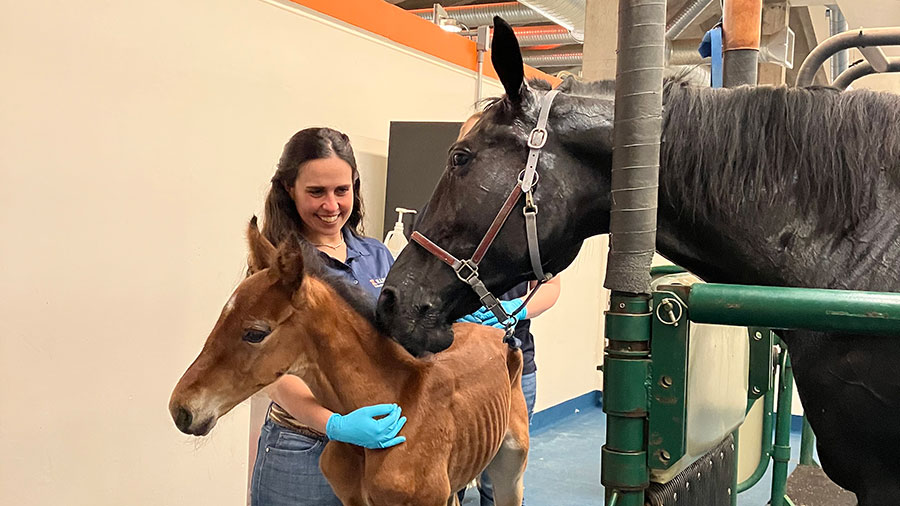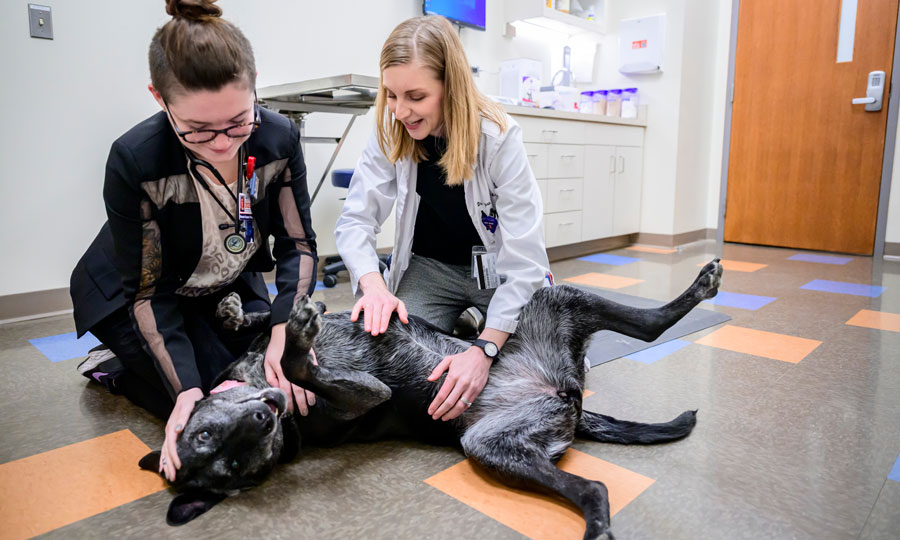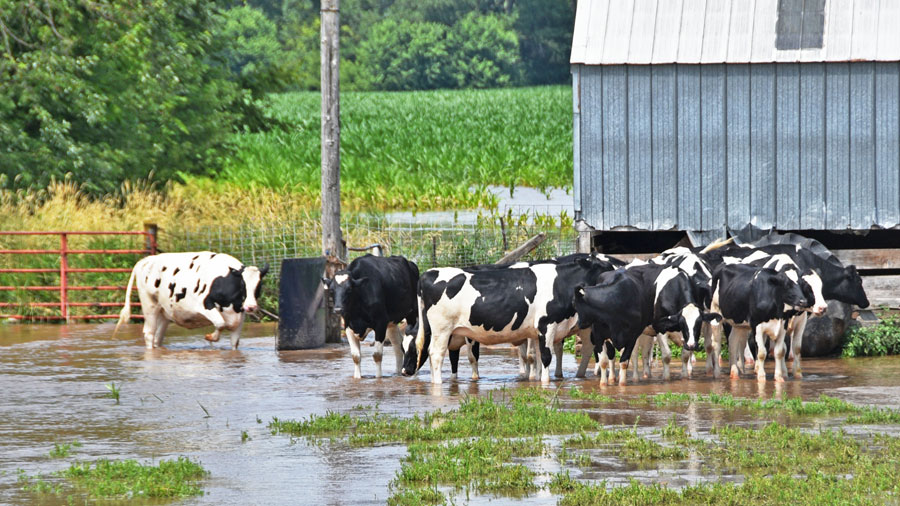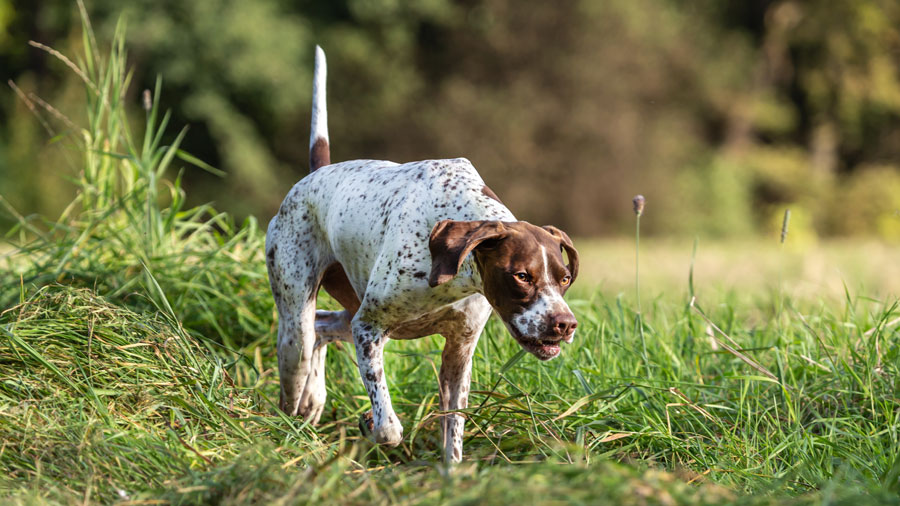In the horse world, springtime means foaling season. But what happens when you have a foal with no mare to supply milk?
Bottle feeding and hand-raising the foal is costly, time-consuming, and often leads to behavioral and socialization problems in the foal. Another option, called grafting, involves getting a mare that is not related to the motherless foal to accept and nurse it as her own. These mares are called nurse mares.
At the University of Illinois College of Veterinary Medicine, world-renowned equine theriogenologist Dr. Igor Canisso has devised a protocol for the grafting process that has resulted in a near-perfect success rate. Illinois equine theriogenologist Dr. Giorgia Podico describes a case that took place this spring.
A Motherless Foal, a Nurse Mare
In late March, a mare successfully delivered a healthy foal at the college’s Veterinary Teaching Hospital but died from complications of the birth within 24 hours. The foal’s owner authorized the grafting procedure so the foal could have the necessary nutrition along with the bonding and socialization only a parent of the same species could provide.
“Imprinting is essential for the development of the foal,” notes Dr. Podico.
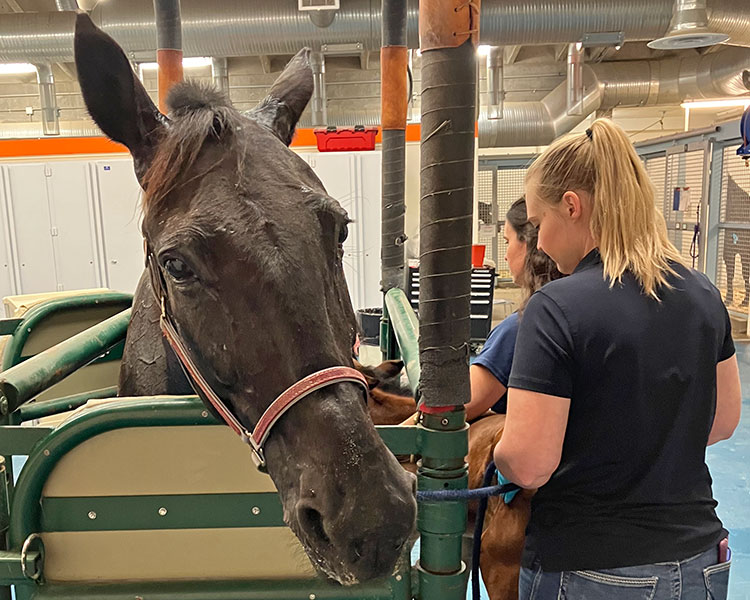
The first step of the process is to identify a suitable nurse mare.
“Ideally the mare has given birth multiple times, is healthy, and has a sweet disposition,” says Dr. Podico. However, there have been successful grafts to mares that have never given birth. And while veterinarians do not generally select a mare that is pregnant at the time of grafting, because many of the medications used during the grafting process can terminate the pregnancy, the equine theriogenology team at University of Illinois has successfully grafted an orphaned foal to a 30-days-pregnant mare without losing the pregnancy.
Bringing on Mother’s Milk
Surprisingly, the nurse mare does not have to be producing milk. Lactation can be induced by administering hormone medications for several days leading up to grafting. During this time, the mare’s teats are stimulated by a process called milk stripping.
“After a day or two when the mare starts to show signs of lactation, we begin milking the mare and tracking how much milk she is producing each day,” Dr. Podico explains. “Once the mare is producing three to five liters of milk a day, she is ready for the grafting process.”
At this point, the mare is given additional medications to promote her acceptance of the foal. The first medication is a synthetic version of the hormone that naturally surges in mares when giving birth and simulates that feeling.
Meanwhile, the foal is covered in the donor mare’s scent using a towel with her sweat or her halter. This practice increases the likelihood that the mare will accept the foal. When both mare and foal are ready, the mare is restrained. Then a handler presents the foal’s nose, ribs, flank, and tail to the mare for an introduction.
First Try’s a Charm
When the foal was presented to the mare in this recent instance, the mare showed the desired maternal instincts toward the foal by vocalizing and licking and sniffing the foal. The foal was then allowed to nurse while the mare was still restrained.
Because this first introduction was a success, Dr. Podico and the team placed the donor mare and the foal in the same stall with a divider between them. Being in the same location fosters the crucial bonding between mare and foal.
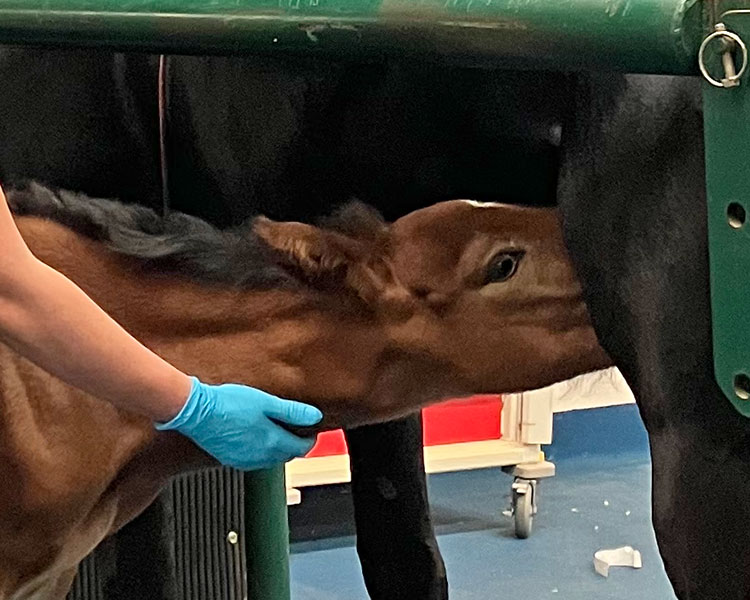
Over the next few days, the equine team carefully monitored additional feedings to ensure that lactation and bonding were going smoothly. Soon the equine team was satisfied that the foal was receiving adequate nutrition and had been accepted by the mare. The foal and its new mom went home to the foal’s owner healthy and happy.
“It was remarkable that the donor mare required only one round of medications,” says Dr. Podico. “It worked like magic!”
More on Grafting
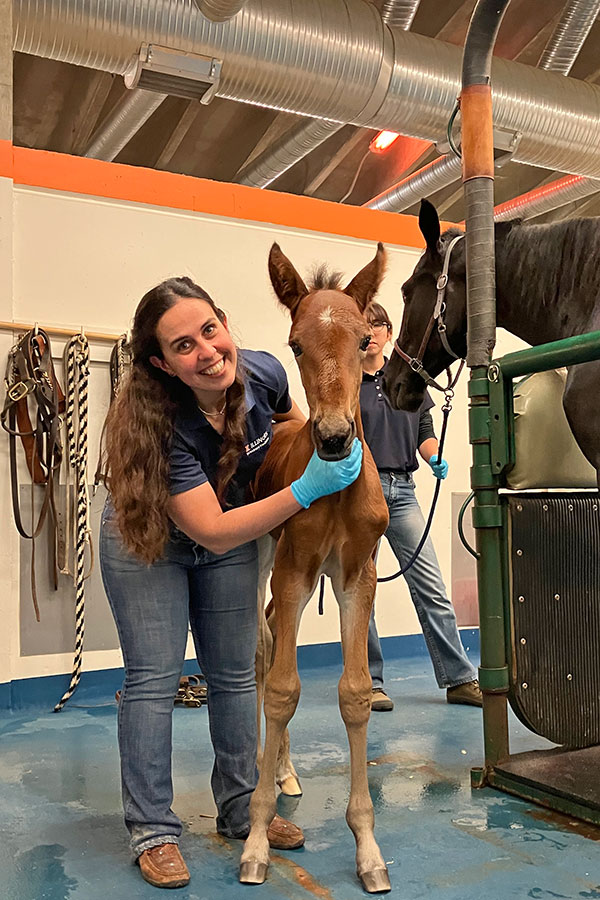
Sometimes veterinarians need to use additional techniques to achieve successful grafting. For example, the vagina and cervix of the mare may be mechanically stimulated to further simulate giving birth. This process releases hormones that promote contractions, milk production, and bonding.
Veterinarians also commonly give the donor mare pain medication and a sedative during grafting. “Many orphaned foals are very eager and will nurse vigorously, which can be painful for the mare,” Dr. Podico says. These medications not only ease pain but also stimulate the release of naturally occurring pain relievers in the mare that promote acceptance of the foal.
Dr. Podico says it is better for the owner and the foal to have a nurse mare rather than to hand raise the foal. Mare’s milk replacer is expensive and can cause gastrointestinal problems in the foal. Foals also have to be fed every couple of hours as newborns. Lastly, hand-raised foals often do not learn to respect handlers’ boundaries and may treat people as they would another horse.
“This can manifest as play biting, jumping, and mounting their handlers,” says Dr. Podico.
The Veterinary Teaching Hospital offers a highly successful foal grafting procedure. The experts like Dr. Canisso and Dr. Podico are passionate about equine reproduction and happy to educate the public about services available to them and their horses.
By Alaina Lamp

